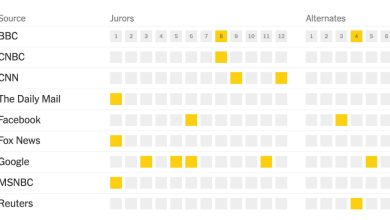
How Much Can I Express Myself Through My Work Wardrobe?
This summer, I will be interning in a corporate setting, and I am wondering if you have any tips for dressing appropriately for work while still being able to showcase my personality? I don’t want to make any big fashion mistakes, but I don’t want to look like a drone either. — Erica, Berkeley, Calif.
“What you got to understand is, when you come into work, you give up certain rights.” So says Toby Flenderson, the H.R. character in “The Office,” during Season 5, Episode 26 — a.k.a., “Casual Friday.” The specific right he was talking about was, as it happens, the right to dress as you want. And while the show may have been a comedy, his statement was not entirely a joke.
When you join an office, you adopt, to a certain extent, its dress code. You give up a portion of your fashion autonomy to be part of the group. And that is a delicate and ever-evolving negotiation between institutions — political, social, professional — and individuals. It has been a subject of high-minded discourse for centuries. (Hello, Rousseau and the social contract; hello, Hegel and the philosophy of right.) It’s about balance of power, and at some points in history the group has taken precedent over the person; at others the person outweighs the group.
The good news is that we are largely in one of those periods when the person takes precedence, meaning you have a bit more freedom now than in the era of, say, the man in the gray flannel suit.
But what does that mean practically? Employers are reluctant to dictate dress codes too specifically, lest they run afoul of human rights law (they tend to fall back on the generic and totally useless “appropriate”), and employees are still clinging to their work-from-home comfort wardrobes.
Darren Walker, the president of the Ford Foundation, told me that “the key to successful office attire is wearing colors and patterns that fit your personality” — as long as they are expressed in a silhouette that fits the office. In other words: fun within the lines.
Risa Heller, the doyenne of crisis communications, advised against thinking you need to don some kind of corporate-cog disguise. “You aren’t going to be able to do your job to the best of your abilities if you don’t feel like yourself,” she said. (She was wearing an army green shirtdress at the time.)
On the other hand, she said, you don’t want to appear to be thumbing your nose at the conventions of your employer, because that sends a whole different message about your attitude toward your job.
The best approach is a strategic one. Begin by playing it a bit bland and observing those around you and what they wear. That will give you a sense of the institutional ethos and how you can stretch it to your own style. Then you can dip your toe in.
Maybe literally. Shoes are a good place to start. If, for example, you like balletcore, Ms. Heller said, pair cigarette pants or a skirt with ballet flats. Don’t appear at work in a “Sex and the City” tutu.
If you are into nautical stripes, wear them under a jacket rather than as a gondolier. If you like denim, try a denim suit jacket or tailored dark denim rather than washed-out jeans.
That way, your clothing will not be a distraction for your new colleagues or potential clients but will, rather, suggest that you are a creative thinker as well as a team player. And you know what that suggests in turn: Hire me.
Your Style Questions, Answered
Every week on Open Thread, Vanessa will answer a reader’s fashion-related question, which you can send to her anytime via email or Twitter. Questions are edited and condensed.




